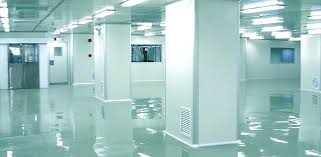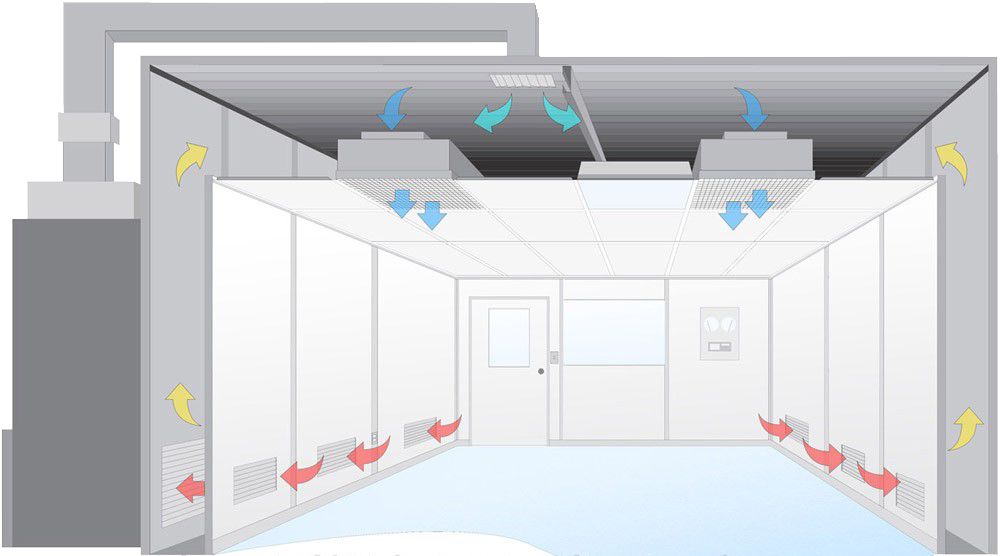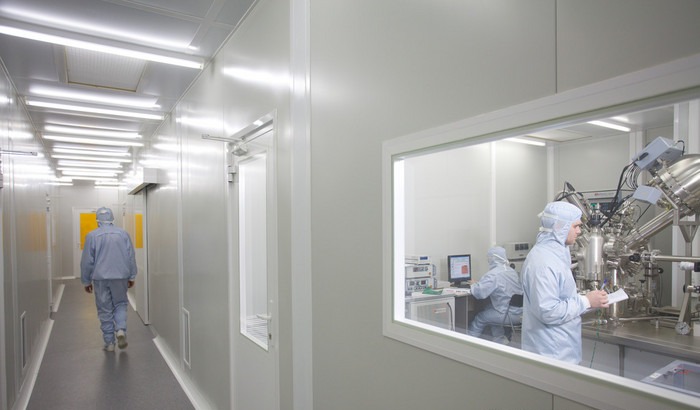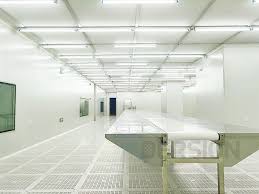Product Knowledge
Clean Room System Details
Clean rooms are rooms where the concentration of airborne particles is controlled and are constructed and used in a manner that minimizes incoming, generated, and retained particles in the room. The temperature, humidity, pressure, and other related parameters in the room are controlled according to the requirements.
The four technical elements of the clean room: first, the air supply should pass through at least three levels of filtration (coarse effect, medium effect, and high efficiency), and the high efficiency filter should be set at the end of the system. Two, the clean room should have enough purification and air supply volume of air conditioning. Three, the clean room should maintain the necessary pressure gradient (positive pressure gradient or negative pressure gradient). Four, the clean room should have reasonable air distribution.

According to the air flow type, the clean room can be divided into unidirectional flow clean room; Non-unidirectional flow clean room; Mixed flow clean room; Sagittal clean room.
Unidirectional flow clean room: Unidirectional flow (laminar flow) clean room, which is divided into vertical unidirectional flow clean room and horizontal unidirectional flow clean room.
The purification principle of unidirectional airflow is the piston and extrusion principle, which squeezes the dust from one end to the other end and replaces the polluted airflow with clean airflow. It includes vertical unidirectional flow and horizontal unidirectional flow. Vertical unidirectional flow is the flow pattern of air flow from ceiling to floor at a certain speed (0.25m/s~0.5m/s). This flow can create 100, 10, 1 or higher clean levels. But its initial investment is very high, the operation cost is very high, in the project as far as possible to compress its area to the minimum, to use the necessary parts. Horizontal unidirectional flow is the flow pattern of air flow from one wall to the opposite wall at a certain speed (0.3m/s~0.5m/s). This flow can create a purification level of 100. Its initial investment and operation cost are lower than that of the vertical unidirectional flow type.

Non-unidirectional flow clean room: Non-unidirectional flow clean room air flow pattern can be divided into top feeding and lower circulation; Top to lower side gyrus; Top to top back and so on.
The purification principle of non-unidirectional flow is dilution principle. The general type is air supply at the top of the air outlet of the HEPA filter; The types of return air are lower return air, side lower return air and top return air. Depending on the frequency of air exchange and the realization of different purification levels, the initial investment and operation cost are also different.
Mixed flow clean room: The mixed flow is a combination of vertical unidirectional flow and non-unidirectional flow. The characteristic of this airflow is to compress the area of vertical unidirectional flow to the minimum and replace the large area unidirectional flow with large area non-unidirectional flow to save the initial investment and operation cost.
Sagittal (diagonal flow) clean room: Select the air outlet of the upper circular arc HEPA filter to supply air, and the air flow pattern of the lower return outlet on the opposite side. The air flow in the sagittal clean room flows out with radial streamlines, and there is no vertical crossing between streamlines. A relatively small amount of air supply can be used to obtain a higher level of cleanliness. It is often used in small clean rooms in pharmaceutical, medical, and electronic industries. It is also widely used in some special laboratories.

According to the main control objects of the clean room, the clean room can be divided into industrial clean room, Biological clean room.
The main control object of the industrial clean room is dust particles (both animate and inanimate).
Industrial clean room is mainly used in electronics, aerospace, aviation, machinery, chemical industry, chemical pharmaceutical, energy, nano, and other industries. In particular, the electronics industry and the optoelectronics industry are inseparable from clean rooms and clean technology.
The main control object of biological clean room is living and living microbial particles, such as bacteria, viruses, and other particles harmful to human beings, animals, and the environment.

Biological clean room is widely used in medical treatment (clean operating room, clean ward), biopharmaceutical, laboratory animal feeding, biosafety laboratory, health and epidemic prevention and quarantine undertakings. The development speed of biological clean room is very fast and has been recognized and paid attention to by all parties.
